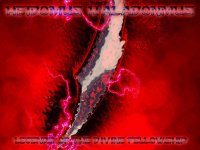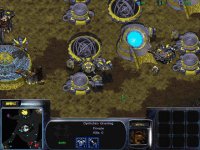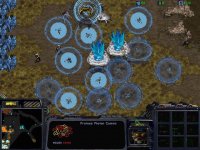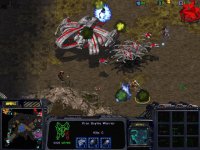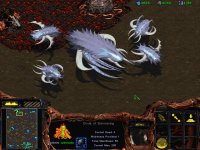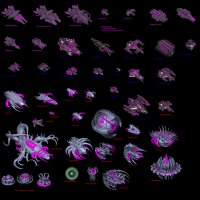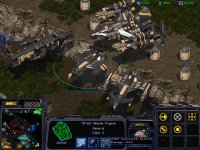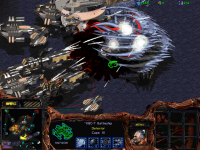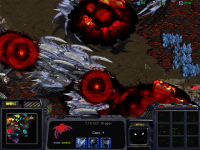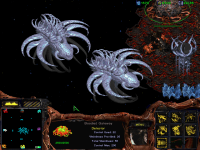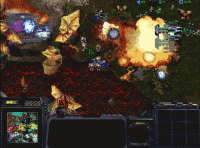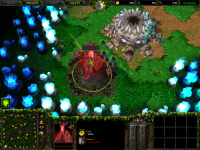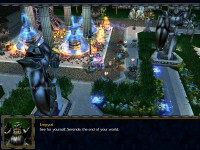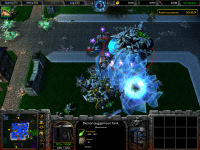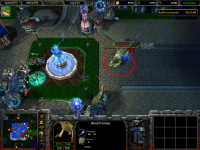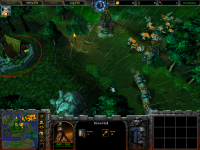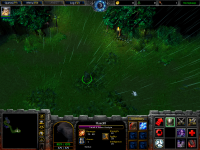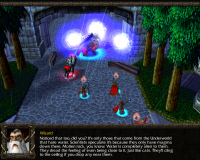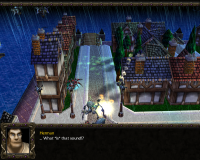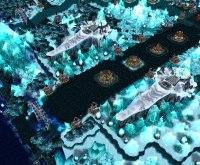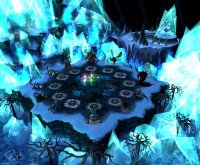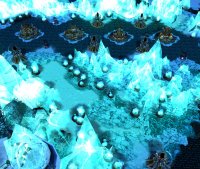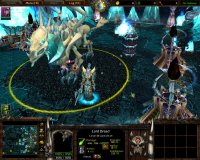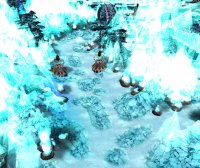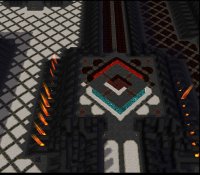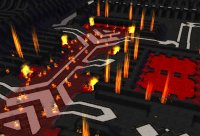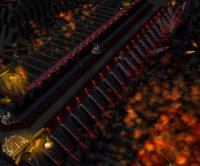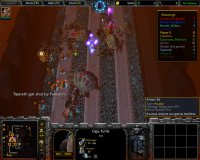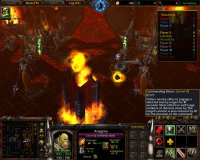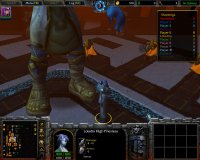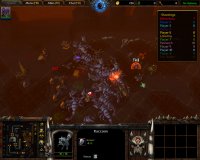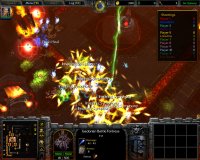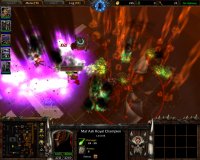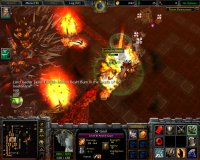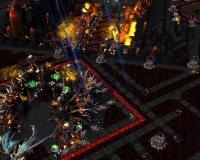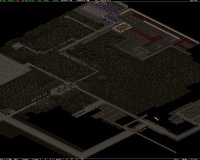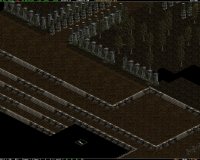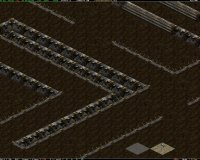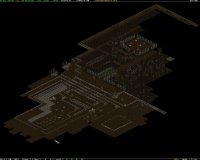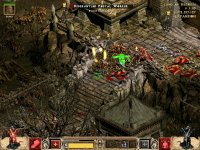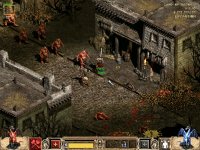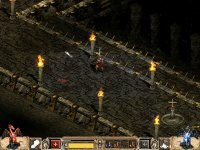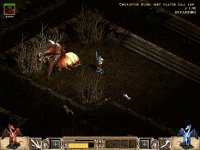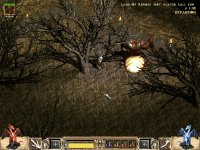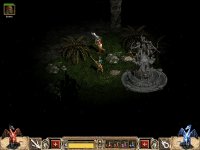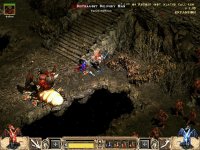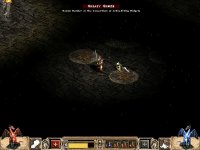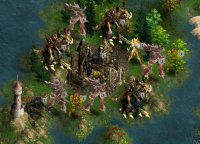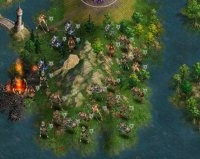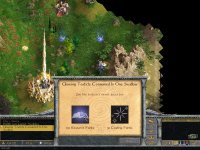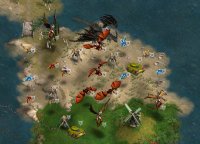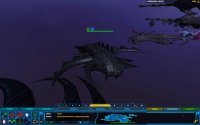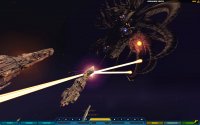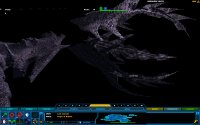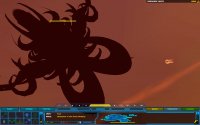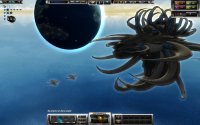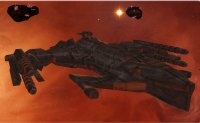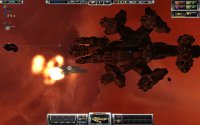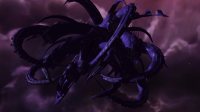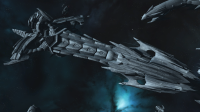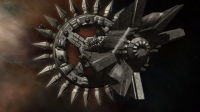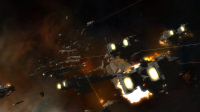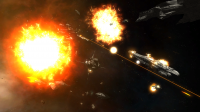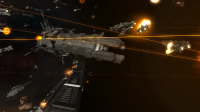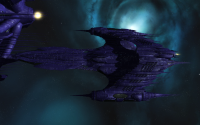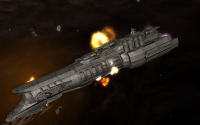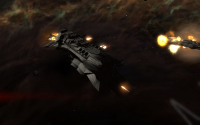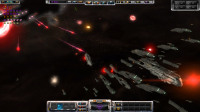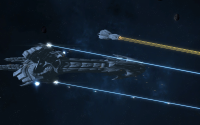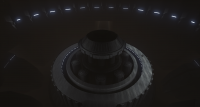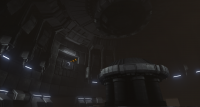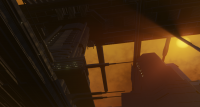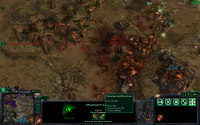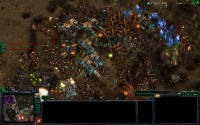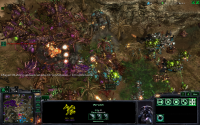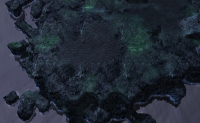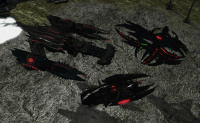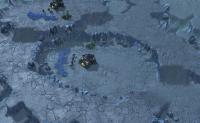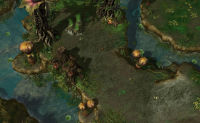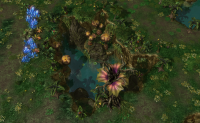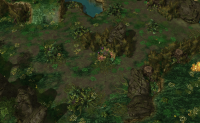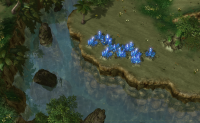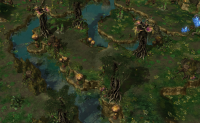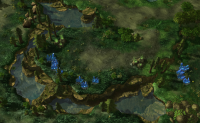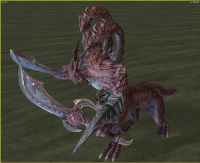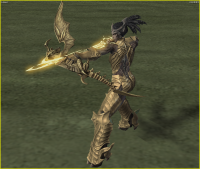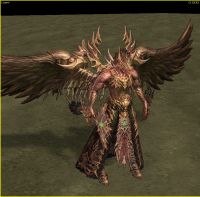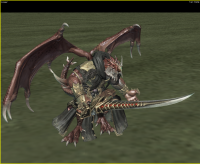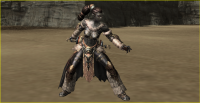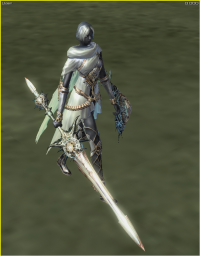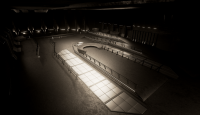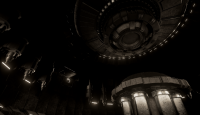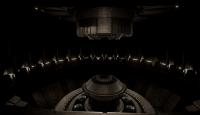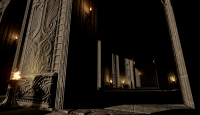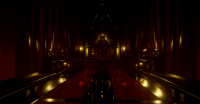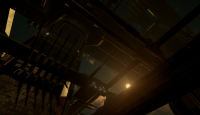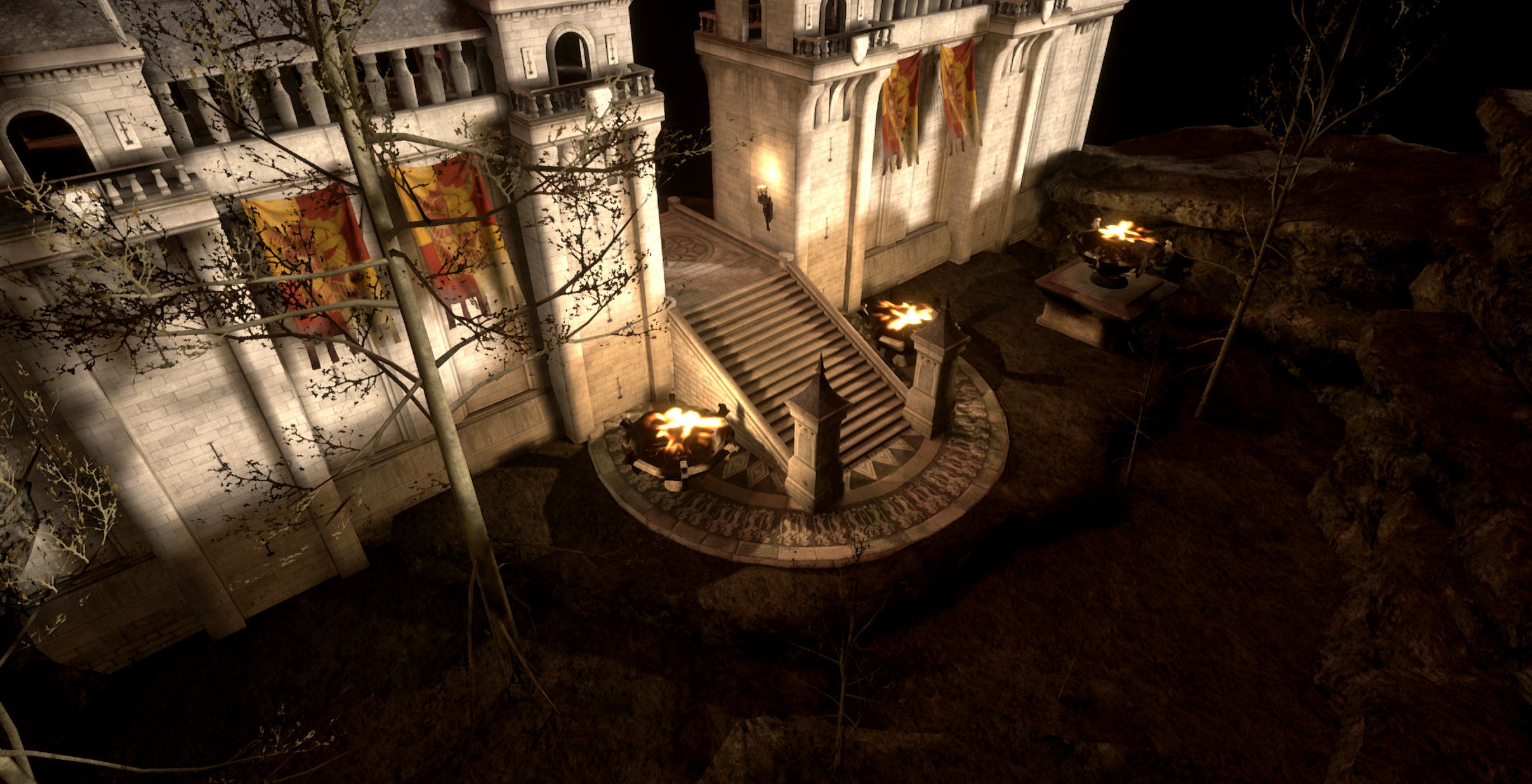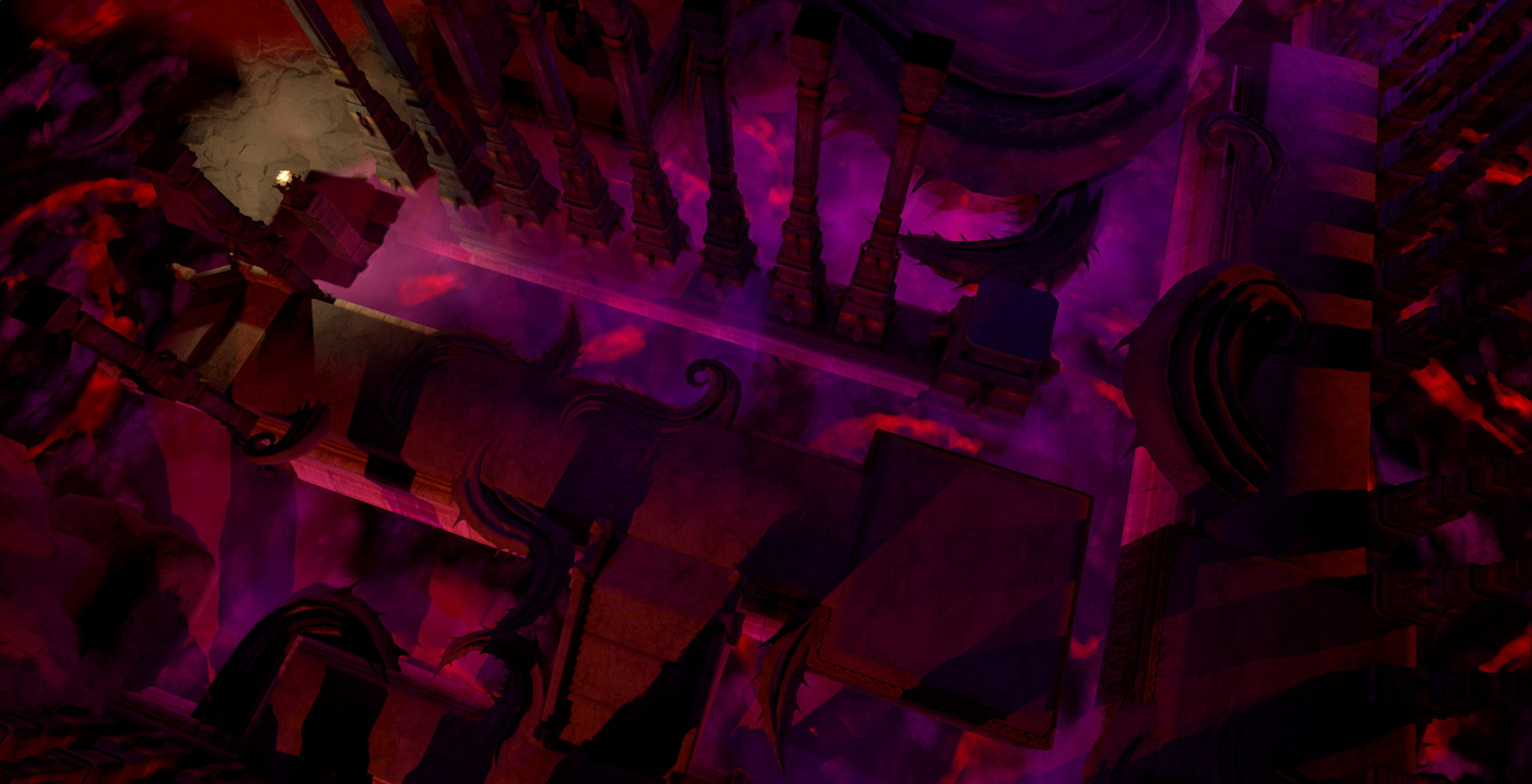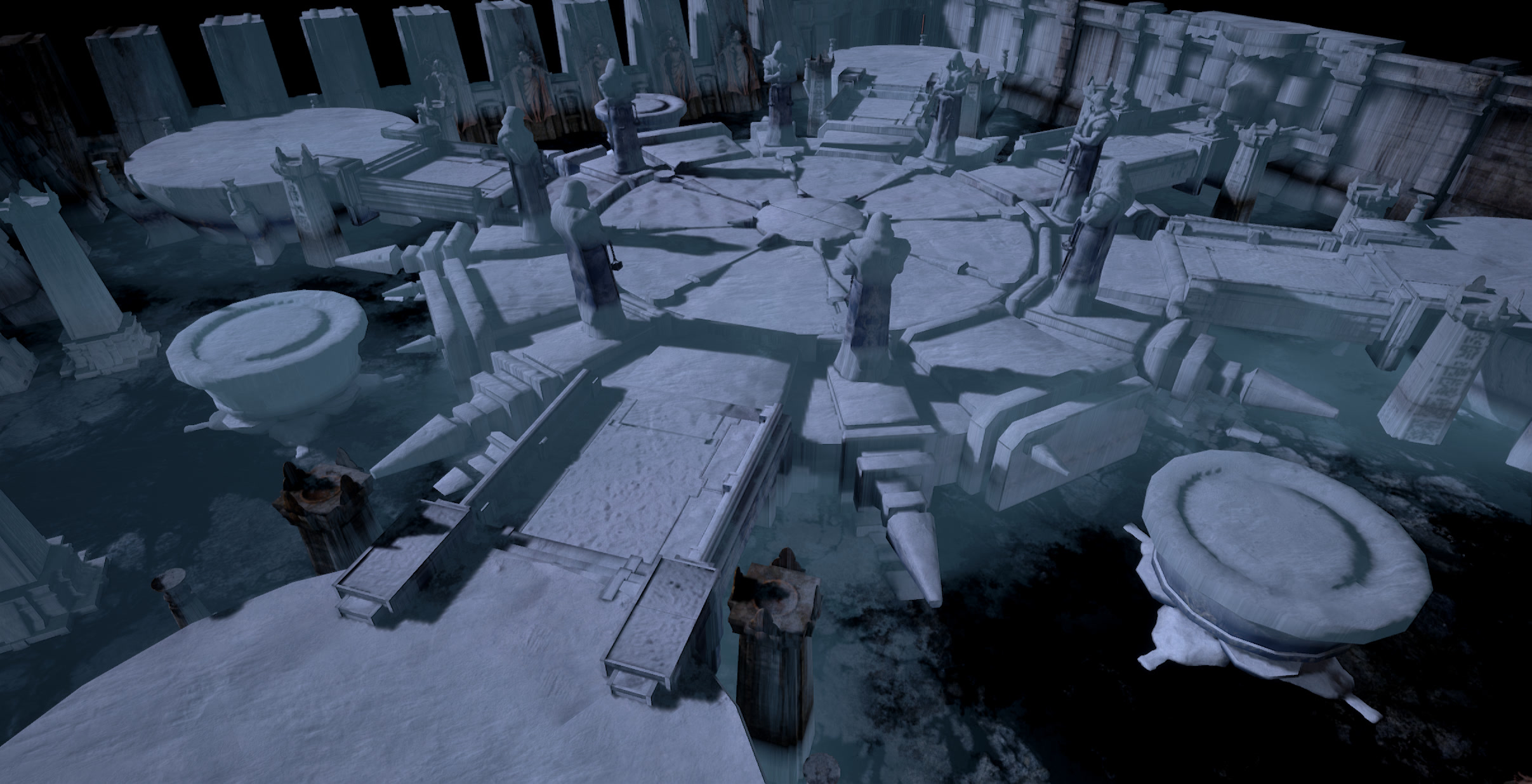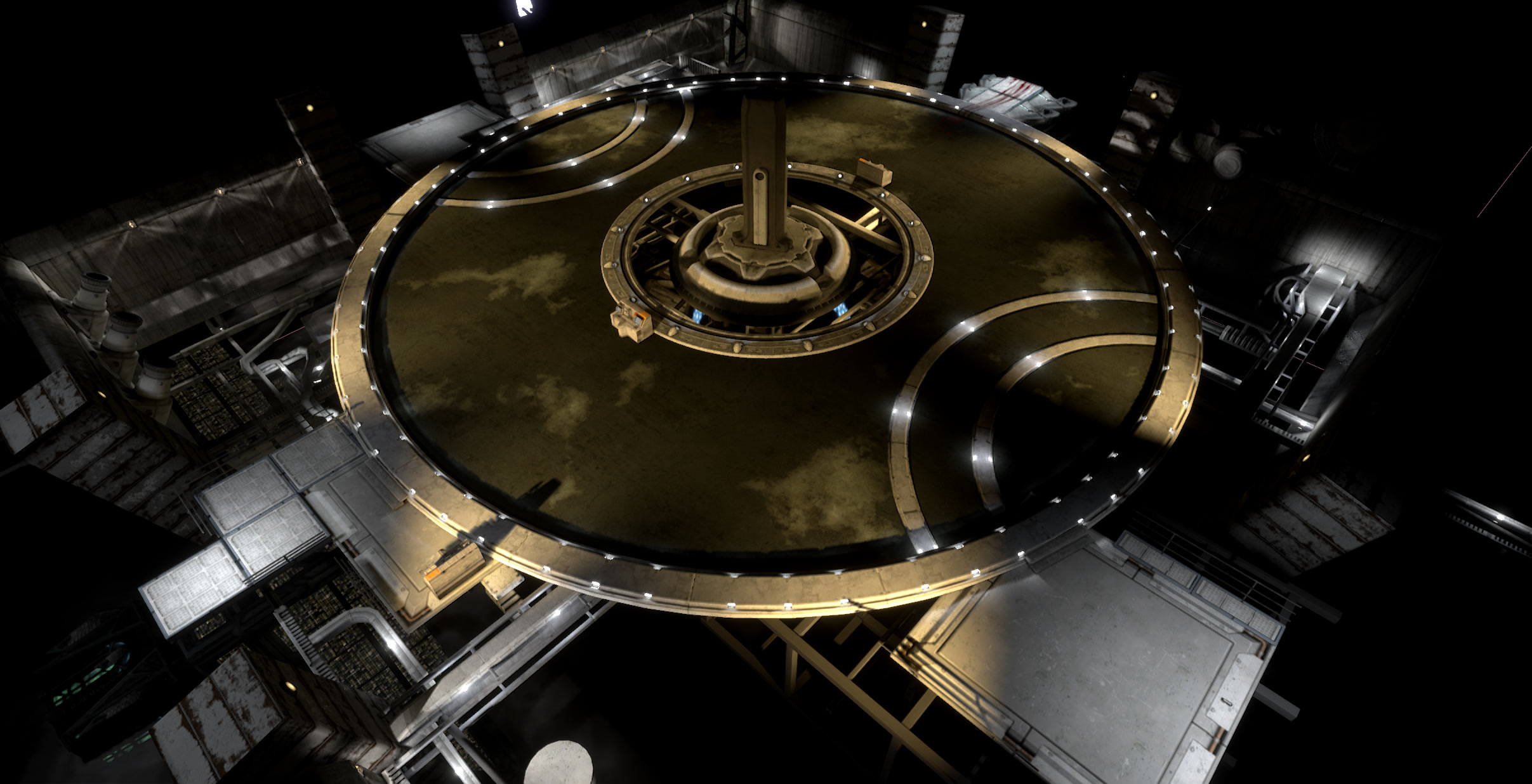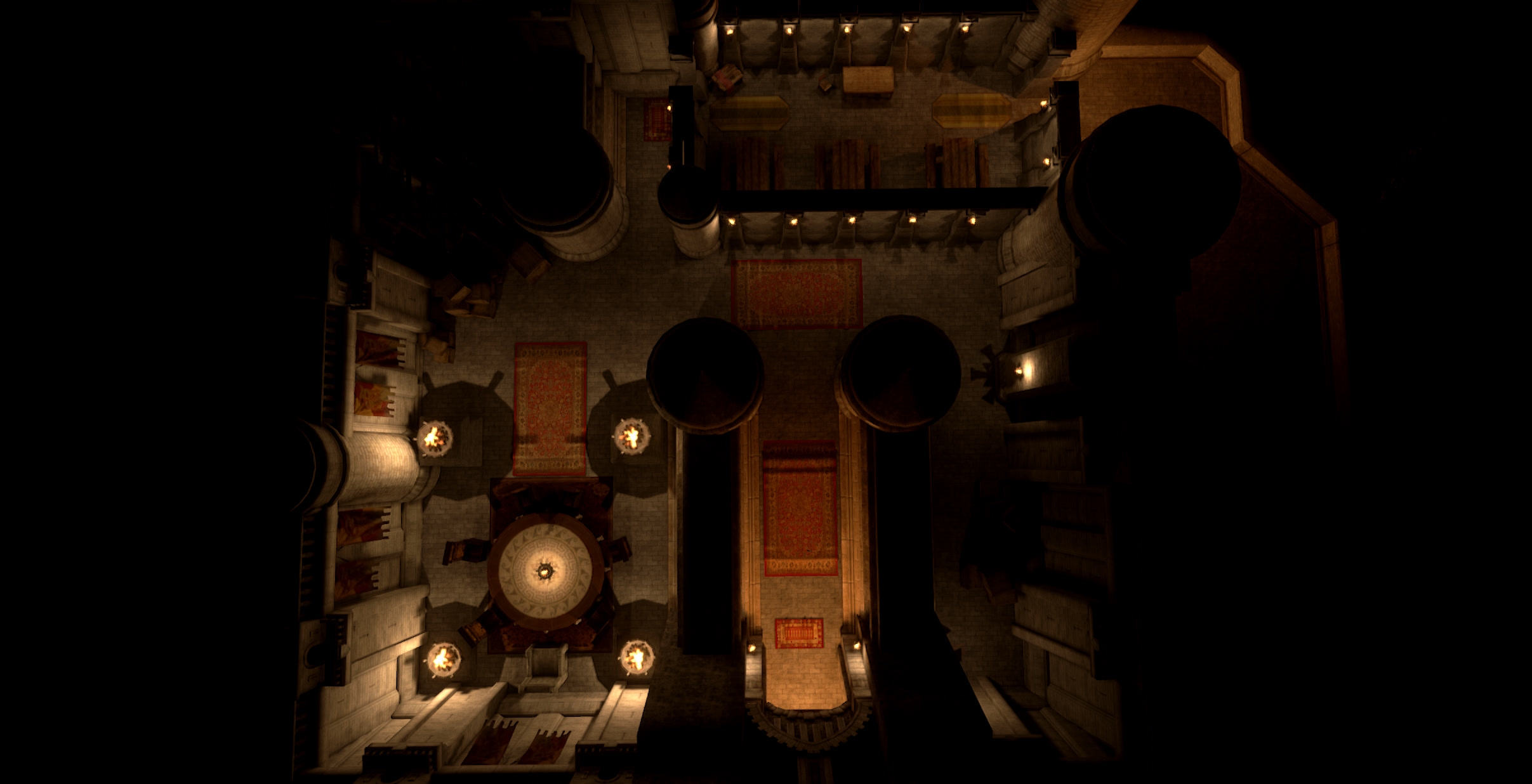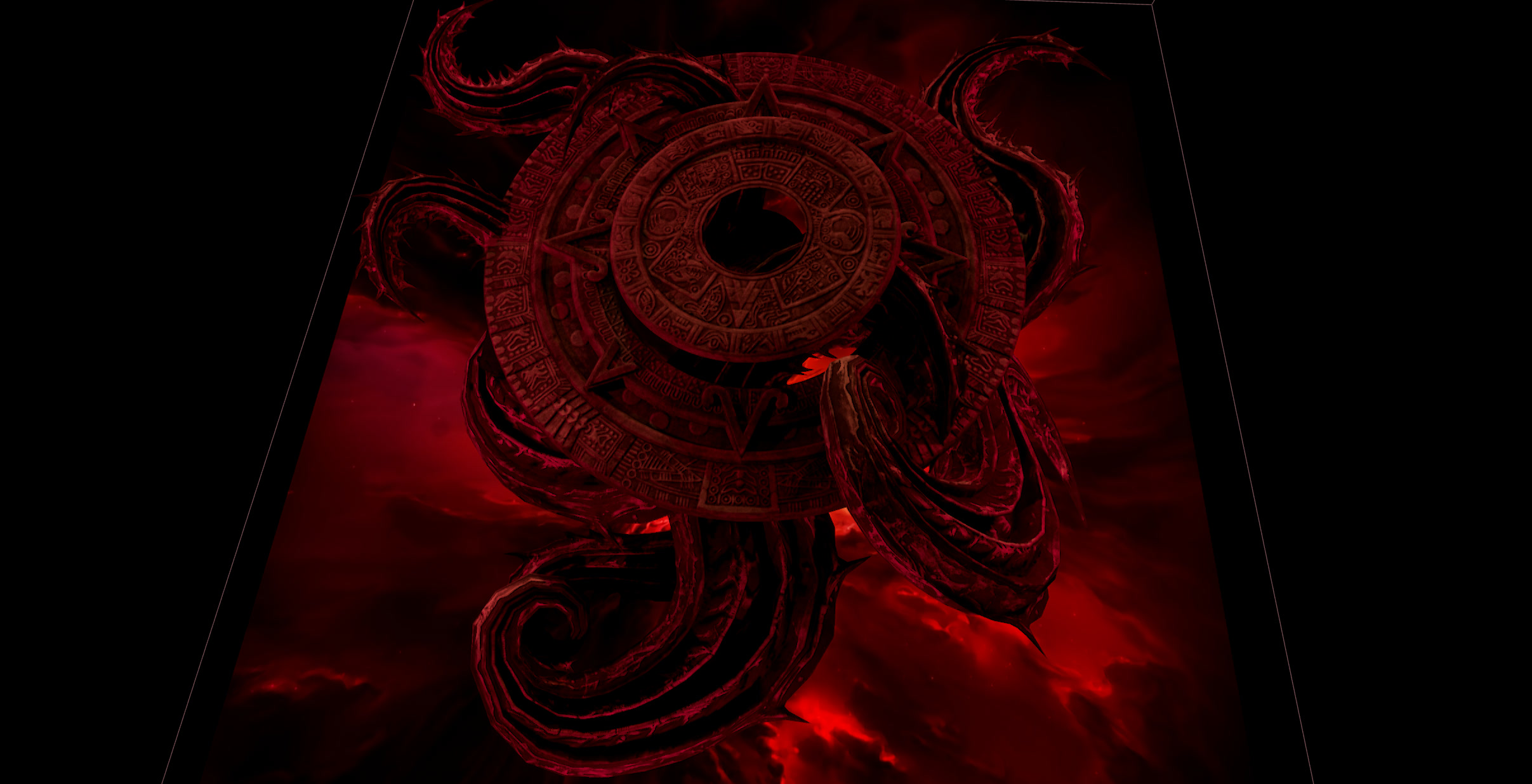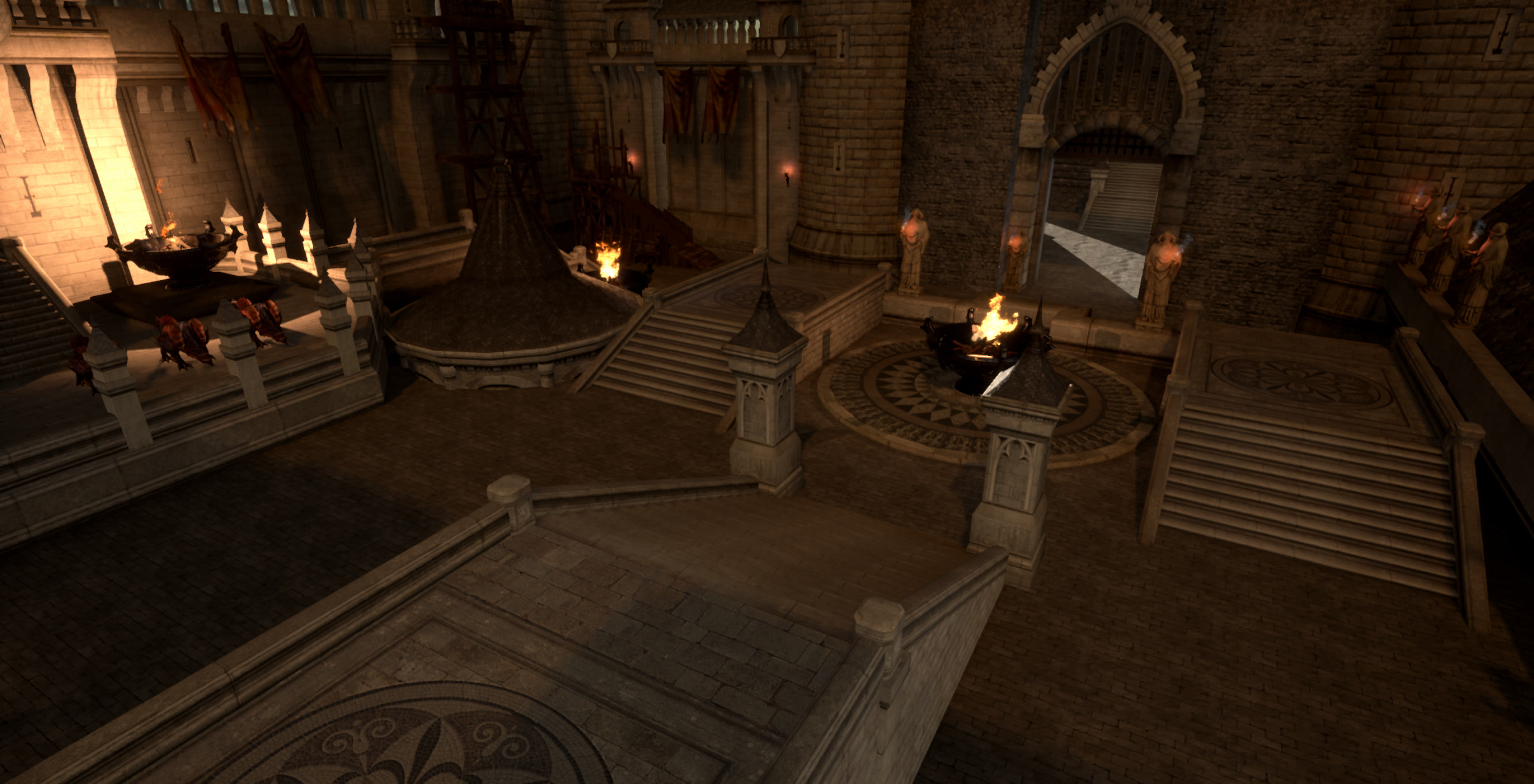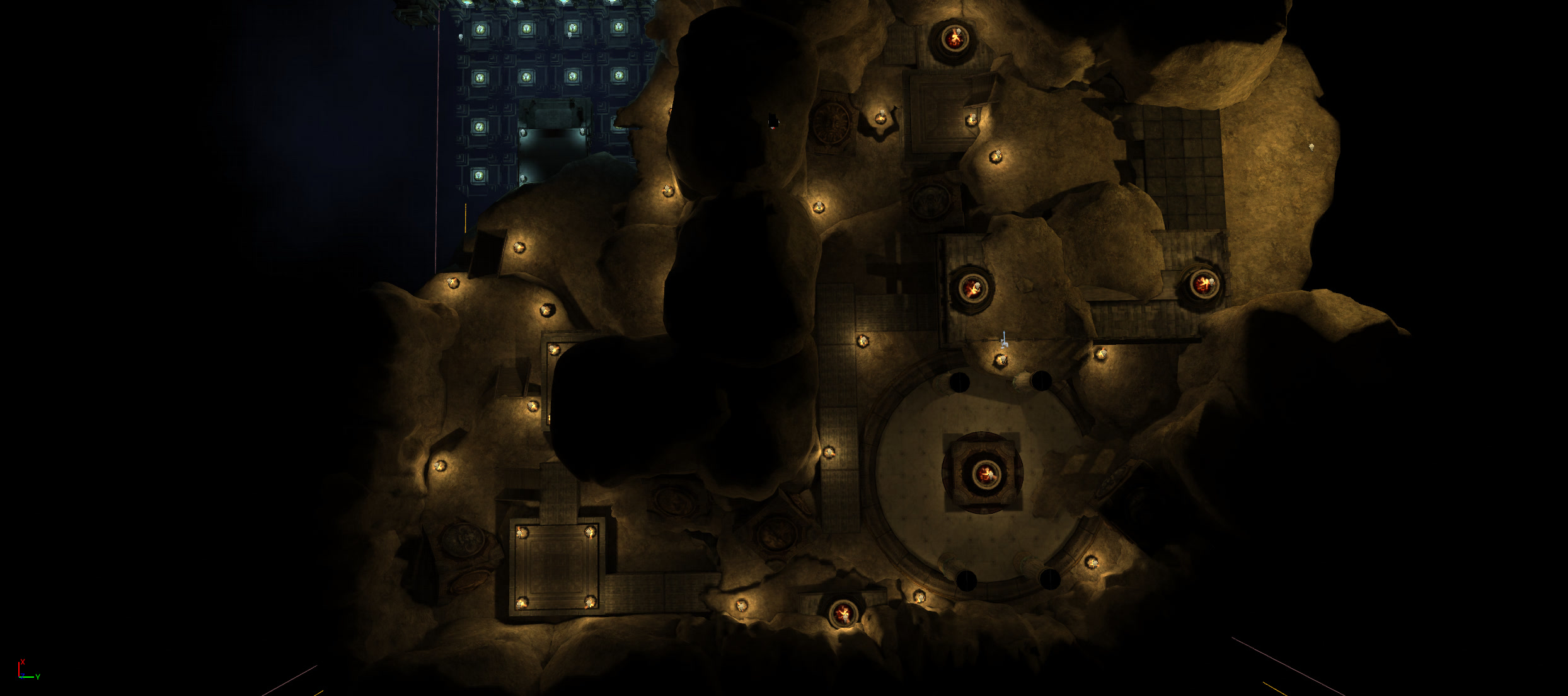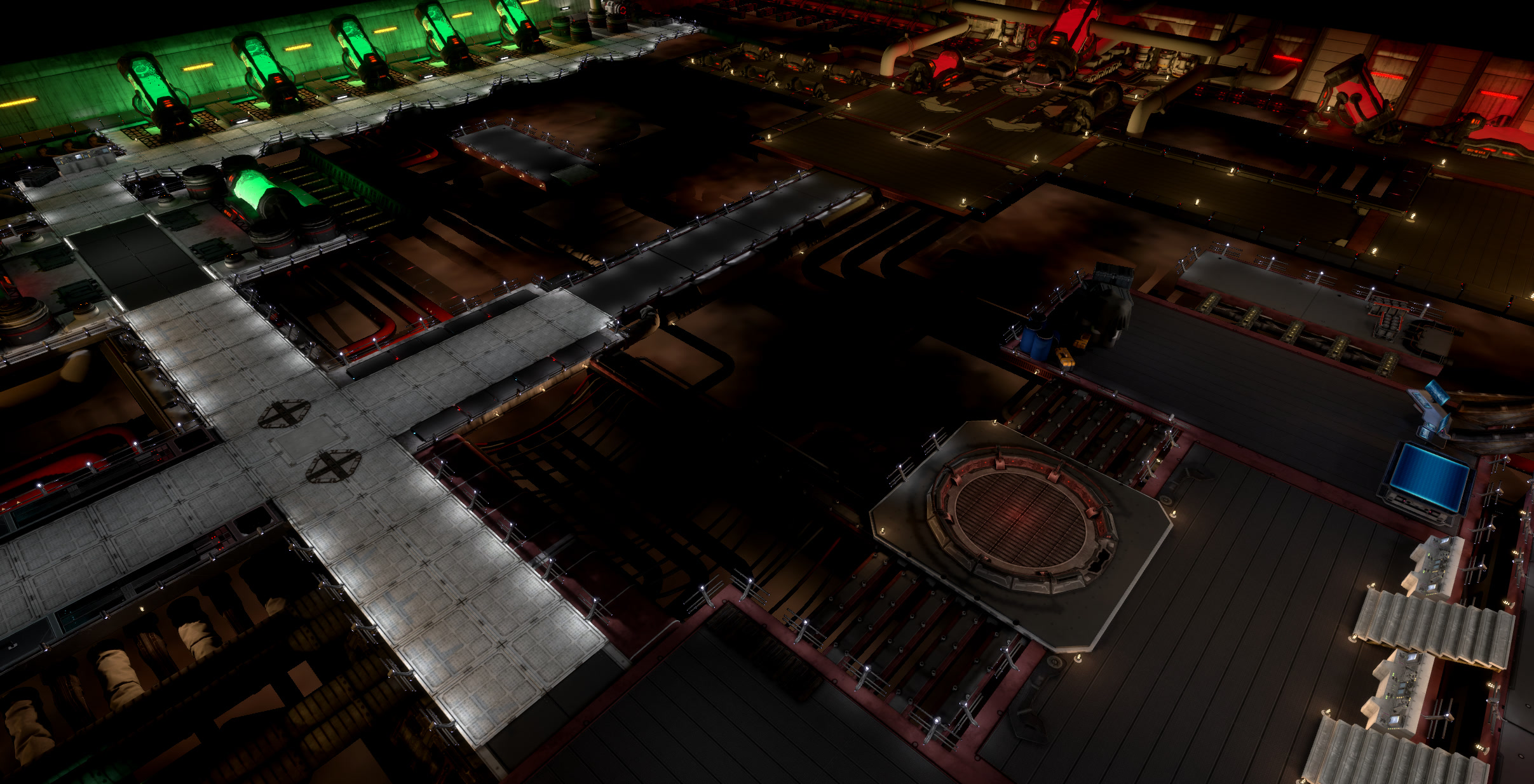About IskatuMesk's Past Projects
Of the many dozens of my various projects, I shall list some of the most significant ones.
Heidomus Kaladonmus
Circa 2004
Manhours: ~1 month
Heidomus Kaladonmus was the byproduct of pursuing advanced Iscript techniques, and was the result of researching the Korean minimod "War of the Magi". HK became one of the most technically advanced mods for Brood War all the way until Armageddon Onslaught and larger ASM projects were demonstrated. Several features included advanced images.dat manipulation, excessive abuse of random condition jumps to build critical and overwhelming hit systems, as well as more complicated weapons like novas and combos. Much like most of my projects, one race was always significantly more incomplete than the others - being the Maeyieth (Zerg). However, both the Terran (DyiithJhinn) and Protoss (Zelconian) had significant amounts of work placed into research and development. The project featured WarGiant's most spectacular sprite work yet, and had custom UI's from DarkOMEN to go with it. The project also had a fully custom soundtrack composed from scratch by myself, and represented the height of my Modplug Tracker capabilities as well as my strongest Cakewalk/Gigastudio capabilties. The project, however, had some very vague stability issues.
A related tech demo, Sarenubus Kaladonmus, was attempted in 2005. This laid the groundwork for what would much later become Armageddon Onslaught.
A campaign was attempted for the project, which even had fully-voice acted dialogue from Gonissa and myself, and blocked out terrain and written concepts. However, it was never completed due to difficulties with Staredit.
In The Admiral's Service
Circa 2004-2008
Manhours: ~3 weeks
A Fleet Total Conversion for Starcraft: Brood War which was pivotal in inspiring many similar projects in neighbor communities. Used as a platform to experiment with sprite rendering in first Rhino 3d (2004ish) and then 3ds max (2009ish). Although well received, ITAS had significant troubles fitting new balancing schemes into the hardcoded world of Blizzard programming. It also could never resolve an extremely elusive CTD which may have been related to the limit expander plugin, and never entered beta.
Armageddon Onslaught
Circa ~2008-2009
Manhours: ~5 weeks
Survival proof of concept technical demonstration pitting 7 players against a single demon player.
Armageddon was exclusively AI controlled and had a vast number of concept units that put many technical limitations of Starcraft to the test, almost unanimously with failure. Those that succeeded formed a project that revolutionized what was expected out of Starcraft mods, featuring things such as expanding the weapon and sprite limits as well as changing fonts. The project saw talent from around the community pool their skills to solve logistics and programming issues. Two release versions were issued across its two separate bouts of activity, the latest of which is still available at campaigncreations.org or this site. The project still has an elusive CTD that likely originates from the limit expander plugin, though most games end before it appears.
Armageddon Onslaught saw an extremely large amount of manhours poured into learning Maya and 3ds max as well as several plugins for 3ds max including Afterburn and Vray, largely with the goal of creating animated CGI for the project's introduction smk. However, the CGI was a failure, and only some of the custom ingame effects, based on Afterburn particles, allude to the immense amount of wasted time.
Eternity
Circa ~2002-2006
Manhours: Unknown (Months)
The vast Eternity projects underwent many transformations and evolutions, originating as simple Warcraft 3 campaigns and melee mods, eventually forming into Loladins of Legends and the GEC Living World concept. They all varied in story and setting, but all universally focused on Build & Destroy concepts, often times with alterations of AoS-styled hero play set against a melee framework. Eternity received assistance from Warbringer87, WarGiant, MantisScreamer (AKA Mantits) and PhoenixIV in various areas such as terrain and custom meshes, but never were more than proof of concepts produced due to the technical limitations of the computer AI. Eternity saw my introduction into porting meshes from other games and learning polygonal modeling (as opposed to nurbs).
Loladins of Legend
Circa ~2007-2010
Manhours: year+
Originating as a cinematic for Warcraft 3, poor performance destroyed several project concepts before settling into a multiplayer AoS clone for Ricky Honejasi's community game night.
There the project saw contributions from Tipereth and Quantum_Menace as well as HKS. Initially, it used custom terrain that was based off of the terrain from The Great Strategy.
The most major rendition of the map had custom terrain based on my design from WarGiant. WarGiant took exceptional effort in detailing the cliffs and heights for the terrain. However, this resulted in extremely lengthy load times for computers at the time, due to Warcraft 3's way of generating terrain meshes from the map file. Further research indicated that more cliffs simply equated to vastly longer load times. Once the base terrain was in and the map was in my hands, all hell broke loose from Underwater Flying Cars to Beastmasters.
Community members contributed hero designs and logistics here and there but the map eventually fell under the weight of having no dedicated staff who could handle JASS. Most of the things the players and I wanted in the map couldn't be done by me alone. Despite this, the AoS featured a variety of concepts never before attempted in AoS maps or indie games to follow, including the Division system for creep upgrades, though several things like the random boss events were adapted into later project concepts, including those by other community members such as Mucky in Cockfighting Arena. In total, LoL consumed far more of my manhours in terms of production time than any individual project before it, and most of that time was spent performance testing, functionality testing, and researching. It is remembered fondly, but I look to it as a strong reason why I should never start a project depending on someone else's help.
Project Loli
Circa 2009ish
Manhours: ~3 weeks
Project Loli was my second attempt at a Diablo 2 total conversion, although issues very similar to the first killed it in the end. Multiple months could easily pass between discovering a crash and finally figuring out what was causing it. Enough bouts of this, and then the eventual discovery of just how heavily hardcoded and buggy the game actually was, resulted in the concept's second and final death. Despite this it acted as a pivotal proof of concept in my RPG designs and had many promising forays into static map and monster design.
Project Loli was a continuation of the Loladins of Legend project string. It sought to help build the actual world, and put players in the seat of a neutral faction. However, Diablo 2 proved to be an unsuiting platform for storytelling, and so more work was placed into researching just how far I could change maps. Its design functioned on "Zones" and forgoed randomly generated maps except for certain transition or optional areas. All major maps are prebuilt static zones with designated high level and low level areas, and have wildly varied monster spawns. The project emphasized extremely high difficulty and ramped up the aggression and ability pool of the enemies you faced straight out of the gate.
Fresh playtests almost always started with ~30 minutes of repeated deaths on the first mobs outside of towns, scraping every single drop into something meaningful. This was a largely positive experience and one I worked very hard to preserve through the project's following zones. I managed to attain an extremely reliable balance, but the lack of understanding code modifications, the limits of the AI, and extremely slow bugfixing stagnated the project until its inevitable death. Ultimately I planned to completely redo items and drops so the first level or two wasn't such an anal massacre, but the rest of the game would stay extremely difficult. I planned to dramatically reduce number bloat across the board.
Loladins of Legend: 2042
Circa 2008-2009
Manhours: ~8 months
An immense scale total conversion for Age of Wonders 2: Shadow Magic. With this project I discovered a strong desire to pursue my meager turn-based heritage and make something out of it. Loladins of Legend as a writing concept exploded in size and, at the time, was second only to my life's work. AoW2 offered plenty of opportunity with over a dozen races to customize and the ability to add hero and unit descriptions. However, despite the fluidity of its tools and friendliness of its tiny community the game itself was the most hardcoded game I had attempted to mod since Brood War. Much like Sins of a Solar Empire, its AI was completely locked down in hardcode, along with a large number of other dealbreaking things like minimum damage ranges and spells.
Despite the troubles with making the game play better I wormed my way into devising improved sprite rendering and managed to trick the AI into building towns, something it normally doesn't do. However, the project suffered corruption at one point which severely hurt it, and this was further stagnated by the AI's extremely ineptitude in handling overworld gameplay. The project died due to lack of interest in the end.
Black Sun
Circa ~2008-2014
Manhours: Multiple years
The colossal Black Sun project follows a long, winding anus of a trail. It started as a Homeworld 2 TC that devolved into a Sins of a Solar Empire TC due to, once again, engine limitations.
For a time I toyed with creating ITAS in Sins instead of Black Sun, but I eventually caved in and committed to a more serious venture. Enough discovery of more limits in Sins killed the mod rather swiftly, but interest in an animated short that was produced before the mod's death (Episode 0) encouraged production of a much more serious venture that would come to consume most of my waking hours. Episode 1 was created and deemed a failure.
A great deal of time brooded between Episode 1 and what would become known as Retribution. Retribution began when a long-time friend, Killer 11 (aka TheCoach) offered to help with a critical aspect of a potential reboot - the character models. A year and a half of nearly nonstop labor ensued until the project died, as he never desired to attempt character models at all in the end. Black Sun was my longest running, most committed, most time-consuming project by a tremendous amount, and virtually nothing from it will ever see the light of day. At the end of 2014 I created a Radioplay variant of Retribution with about 1-2 months manhours, which is available on this site.
Retribution featured ventures into the UDK and environmental modeling, as well as advanced particle systems in UDK and Sins both. The audiobook was my most massive audio production ever created, with 2-5 hours of recorded dialogue per paragraph of text.
Apex variants A-H
Circa ~2009-2016
Manhours: ~10 months
Apex was symbolized by its AI research, something that dragged it to its grave.
The ill-fated Apex project first began as an Armageddon Onslaught 2 concept, originally destined for Starcraft 2. Planning and asset allocation began before the game's release, but once in public hands it quickly became evident that Starcraft 2 was in for a very rocky start in custom content. Analysis of the beta and subsequent release of the editor spelled doom for the sequel of Brood War, a forbidding omen that rung true, as it took over four years for Blizzard to release their 3ds max exporter, and the editor, to this day, remains a trainwreck of poor performance and disorganization.
The project suffered repeated setbacks from the game silently deleting content from expansion prepatches, the most noteworthy being 1.5 which deleted two months of work and related backups.
My terrain style was very classic Brood War, focusing on minimalism and function over doodad spam. I did eventually plan to replace all of the game's default textures and doodads, along with sfx and particles, however, a process I had indeed started on by the project's death. The final product would have even hardly resembled Starcraft 2. This was just getting my feet wet. Simple experiments and concept proofing. Custom graphics were few, especially in the dark age prior to the release of the Art Tools four years after the game launched, but were nonetheless promising minus exporter-related bugs.
Originally intended to be direct recreation of AO, Blizzard's removal of mod support killed the multiplayer arm of the project before it even began. I moved to a third-person ARPG concept, but game performance and controls were unsuitable for third-person view. By the end of 2010 all dreams for an Armageddon Onslaught remake died entirely, and a new, RTS-specific concept, called Apex, took shape.
Apex was intended to be a high-dfficulty set of campaigns with very AI-centric melee-styled gameplay modeled off of a mix of professional Brood War and community games. Very few missions would contain triggers past the cinematics - all of the user interaction, including base construction, attacks and defense, would be governed by the AI and player versus player interaction - just like a real game of Starcraft. Apex had garnered quite an amount of interest from this concept alone, as traditional Build & Destroy campaigns (including the official ones) relied exclusively on automated spawning of units, and offered no Player versus Player engagement opportunities. Traditional options offered through Blizzard's editor don't even have Defense! The only solution was, of course, to do something more dramatic than what typical mappers were accustomed to.
Build a hybrid AI out of the melee scripts and make it function in a campaign environment.
It would be modest to say I merely "ported" graphics from other games. Normal maps, specular maps, particle textures, particle systems, custom animations and materials, mesh mods, kitbashing, all things that were commonplace in the smallest pieces. I did not simply port things. I remastered them, made them greater than what they once were. The countless years of laboring on such subjects set me up for enormous success in Starcraft 2.
Against all odds, I pushed myself and HKS to try to master the stillborn engine of Starcraft 2 but, much like with Warcraft 3, it was computer AI that crushed me in the end. JademusSreg was laid beaten and bare and, while HKS made marginally greater improvement than any other dared to dream, we were unable to solve the most critical problem of the game - the performance. My dream was to create a challenging Build & Destroy experience and, while I had the gameplay nearly completely figured out, the performance and AI were impossible to fix without full source access. The very thing the campaign relied on to survive simply could not exist in Starcraft 2. It was a soul-destroying six year journey to be forced to, once again, throw away everything I had worked on at the end of what should have been a victorious sweep.
Ultimately, Apex proved an invaluable learning experience for both myself and HKS, and much of our labors would later manifest in third party work, including Pirate's "Dwarven Combat" which featured my graphics and voice acting and would win Blizzard's Rock the Cabinet contest, and both HKS and I contributed to Carbot's Starcrafts. Bits of Apex's graphics research trickled down to other third party ventures, such as The Antioch Chronicles.
That was the last I ever modded a game. The writing of Apex evolved throughout its lengthy development life, but most of it will never manifest in anything. The bitterness of the Apex experience salted my experience with custom content and destroyed my passion.
Here, in a proper engine, my limited skills stand to be tested by the ultimate trial, and the lopsided nature of my abilities would curse any potential I may have had within UE4 were I an artist to begin with.
I attempted arms of research into Unreal 3 and 4, but ultimately I had to accept I simply was not skilled enough in graphics or programming, and couldn't make the success in this environment that I had made in others. The age of my spotty knowledge and the exhaustion of twenty years of laboring fruitlessly had finally caught up with me.
Starsworn (And SS ARPG)
Circa ~2016-Present
Manhours: ~7 years
Due to unforeseen and fateful circumstances I was introduced to Dungeons and Dragons during one of the lowest parts of my life - 2016. Following a little over a year of being baited into thinking this new world would be a suitable place to finally settle down and enjoy myself, I would soon experience various 4chan class act greentexts such as "The Ghost and the Ghost, And also the Ghost", "The Nepotist", "The White Knight", and "The Gas Light" in a comedic but depressing spiral of events that ultimately resulted in me taking almost all development content underground and breaking away from most communities I was once a part of.
The four derps of the apocalypse surrounded the infancy stages of a project I had been peer pressured to start during my time in the nether regions - my own D&D campaign. Indeed, I had repeated a past mistake I should have known well enough to never repeat - I involved not one, not two, but three (3) complete strangers in something as important as getting my feet wet in something I knew absolutely nothing about and my previous projects didn't prepare me for. Hubris that would cost me enormously.
At the time of this writing, in 2020 May, I'm still working day to day on Starsworn. In spite of the disaster that befell its first steps it has since become my most significant work of my life. This project, much like the Action RPG rendition I experimented with at the end of 2019, will see almost no public-facing development productions in spite of being my most massive undertaking.
What is Starsworn and why does it continue to exist despite all the negative vibes that surround it?
Starsworn is a D&D 5th edition campaign in the Apex world established by the previously discussed Apex projects. In the three years it has been in active play it has gradually introduced homebrew rulesets governing items, spell interactions, damage mechanics, and integrated a stripped-down version of the Living World system. The vast majority of its content is remastered from web assets or hand crafted, such as the maps, with varying degrees of success. The players are community members UntamedLoli, Schwa, Mucky and Thalraxal, though some short adventures I ran in 2019 also included Steak and Lollerskates. Lollerskates and Swedes regularly contribute feet pics to the project, and Jadeymew has created assets for it as well, but the vast majority of work is done entirely in secret, only to be seen by the players when they finally discover it.
Starsworn is a never-ending trial as it continually seeks to push further and further the boundaries of my skillset. Currently it's stuck on the roll20 platform, a clunky and extremely user-unfriendly platform dated in 1997 that doesn't take advantage of WebGL or any other features in favor of trying to extract money out of new and ignorant users taking to the internet with the rise of tabletop editions designed exclusively for phone users, like 5th edition D&D. However, in the sweatshops of Ireland, HKS works slowly but steadily on a stand-alone client in Unreal 4 that will replace all alternatives and at the time of this writing is already competitive with roll20 itself feature-wise.
To make maps for D&D I must wrestle with an Orthographic camera that doesn't support depth, wrestle with optical illusions, wrestle with the coloration of unrelated assets the players experience, and wrestle with time. Sometimes I must make up to 5 new maps a week in addition to preparing music - which entails finding the perfect tracks and heavily editing them so they loop better and play better without unexpected swings in tempo or volume - in addition to finding portraits, full-body images, and other assets to edit so they are transparent for unit graphics, de-noise because morons still use webp and q0 jpeg SD uploads for their resumes, and sometimes color and finish myself despite having no artistic ability whatsoever - and finally, in addition to making and designing statblocks and sheets for units and items, since I reference no third party material for my content.
D&D was an unexpectedly challenging project to get into. Although I was able to translate much of my design methodology from modding to the new platform, the process of writing in real-time and writing descriptions on the fly was not something I was prepared for, and to this day I still struggle a lot with it. I'm an extremely bad spot writer and prefer to reprocess my scripts and other material dozens or hundreds of times before considering it a draft, while D&D allows for no second chances at all. This means I rely a lot on my visual and audio assets to deliver what I cannot deliver with words, and the process of getting to the skill level necessary to accomplish that has been testing at the best of times.
While the trials of SS are intense and never-ending, there is a special reward in being actively engaged with the players and co-operatively working in a world I have spent no small amount of my life building. It's hardly where I expected Apex to end its ten-year journey, but the results can't be underestimated.
Why D&D?
This question is one I've been presented more than a few times. Indeed, my skill set and personality don't mesh well with a real-time social environment. But truthfully, I had more enjoyment when I still played than I ever had with modding, since it allowed me to be creative and explore immersive experiences more actively, and having real-time interaction with players experiencing my content in turn has been fulfilling in ways I cannot easily express in the written word. To me, it's a worthy conclusion to my time as a developer even though it won't bring me any fame or fanfare.
Suffice to say, Starsworn and its ARPG variant are very likely to be the last content creation projects other than videos I am going to attempt. While I won't rule out a future undisclosed project on a custom engine that is being worked on, it seems unlikely I will live to do anything like Starsworn again. At the very least, I will not return to D&D as a DM once Starsworn is complete. Starsworn's full lifetime is something I am not sure about.

